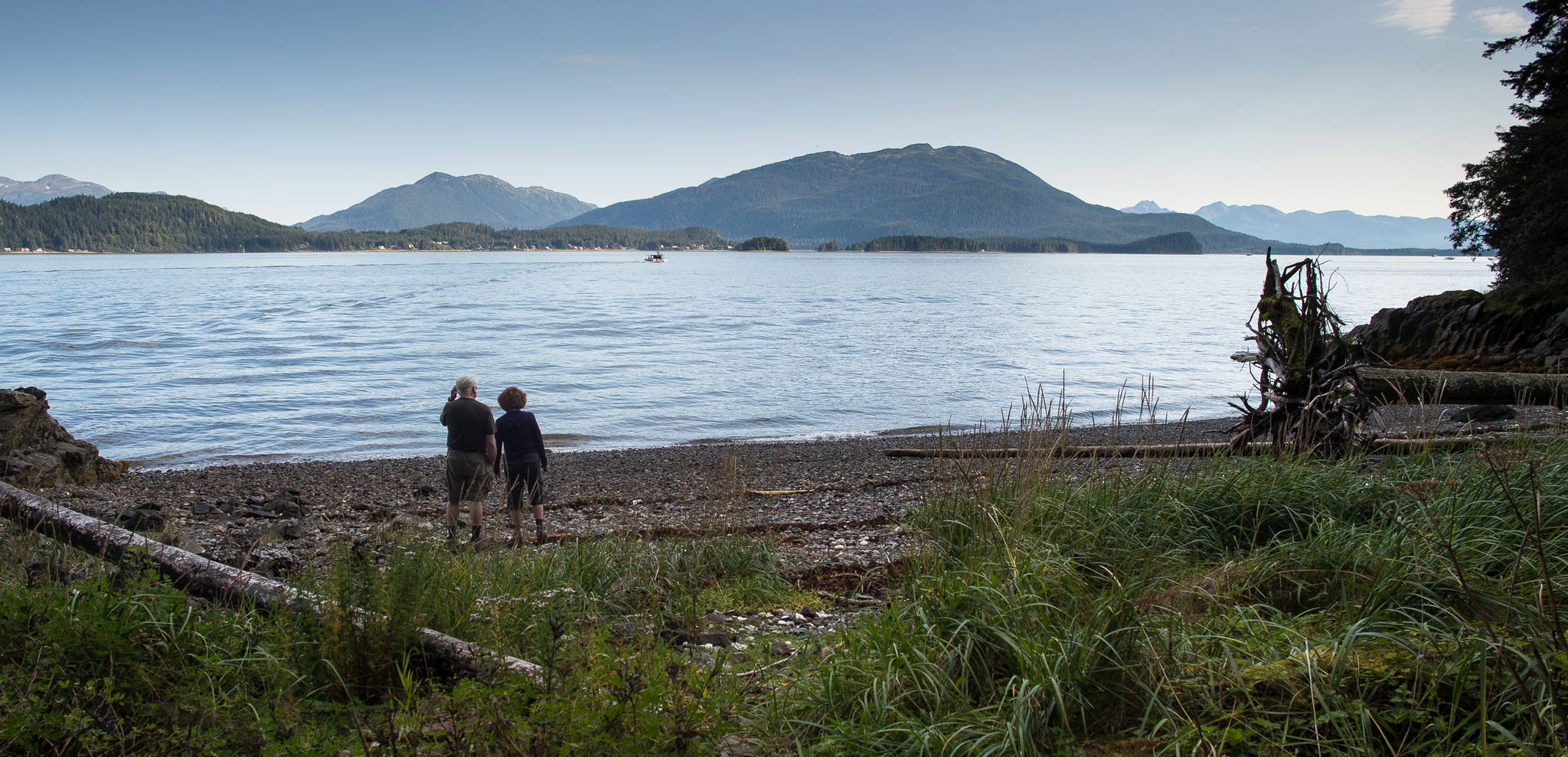Last year, Juneau’s Indian Point was added to the National Register of Historic Places. This year, a movement has begun to get a portion of the land back to those who originally inhabited it.
Indian Point, also known as Auke Cape, is one of the original village sites of the Auk’w Kwáan but has been out of the tribe’s possession for decades. It sits past the ferry terminal, but before Auke Recreation Area, and separates Auke Nu Cove and Indian Cove.
The City and Borough of Juneau owns roughly two-thirds of the land, and next month, city officials will discuss relinquishing the land.
Goldbelt Heritage Foundation Executive Director Dionne Cadiente-Laiti wrote a letter to Mayor Ken Koelsch and the CBJ Assembly in August, laying out why she believes the city should return the land to the Auk’w Kwáan, in a way. The land would go to Goldbelt Heritage, which Cadiente-Laiti wrote “would welcome being the cultural keeper of Indian Point on behalf of and in concert with the Auk’w Kwáan.”
CBJ Deputy Lands and Resources Manager Dan Bleidorn said Thursday that the Lands Committee will discuss the proposal at its Oct. 23 meeting with the intention of passing it on to the Assembly for a public process. City staff is currently examining the proposal, and Bleidorn said there’s a great deal of interest in the possibility at City Hall.
“Stuff like this doesn’t happen very often,” Bleidorn said, “so it’s a fascinating project.”
[Feds designate Juneau’s Indian Point as sacred, worthy of protection]
In her letter, dated Aug. 15, Cadiente-Laiti laid out a few specific goals for the land. One goal would be to build a Historic Research Learning Center at the site that aims to conduct research and raise public understanding of the area’s significance. Cadiente-Laiti also wrote of undertaking anthropological studies, hosting educational programs for children, offering internships focused on historical analysis and more.
Former CBJ Assembly members Kate Troll and Randy Wanamaker are also championing the effort, and Wanamaker said he feels that Goldbelt Heritage is much better equipped to make the most of the land than the city is. Over the years, the city has been unable to do much with the land because of the land’s cultural significance. As a nonprofit, Goldbelt Heritage could apply for grants to conduct research on the site.
“In terms that most people understand, it’s essentially a sacred site,” Wanamaker said. “There are burials there. It’s the original village. The uses that had been proposed for the area have always been culturally inappropriate and they’ve always been dropped because those types of uses just don’t fit the area.”
Wanamaker specifically said that Goldbelt Heritage could partner with other organizations such as the National Oceanic and Atmospheric Administration (NOAA) to research ways to restore the herring population in the Auke Bay area where herring used to spawn in huge numbers.
Wanamaker said his grandfather was living in the Auk’w Kwáan village at Indian Point when the Forest Service seized the land without permission in the early 1900s, and that getting the land back would mean a great deal to the Auk’w Kwáan people.
Goldbelt Heritage and the Douglas Indian Association have taken a few measures lately to work with the city to mend old wounds and honor the history of Alaska Natives in the area. Earlier this summer, Goldbelt Heritage and DIA collaborated to raise a healing totem pole at Gastineau Elementary School to remember the graveyard that the city paved over to build the school. The city unearthed graves on the land in 2012. They’re also raising another pole at Savikko Park in the coming year to commemorate when the City of Douglas burned a Native village to the ground.
Having Indian Point back in the hands of its original owners — or at least in the hands of Goldbelt Heritage — would honor the area’s past, Wanamaker said, but it could also present an economic opportunity for Juneau.
“Those kinds of things would be a tremendous draw for visitors to Juneau,” Wanamaker said. “They’d want to come and see a traditional village site that has been restored.”
• Contact reporter Alex McCarthy at 523-2271 or alex.mccarthy@juneauempire.com.

